Boot: 2022-2023 Fischer Ranger Pro 130 GW DYN
Stated Flex: 130
Available Sizes: 23.5-30.5
Stated Last (size 26.5): 99 mm
Stated Range of Motion: 55°
Stated Forward Lean: 16°
- Re: ramp angle, from Fischer: “the difference between the toe and heel is 12.4 mm”
Size Tested: 26.5
Stated Boot Sole Length (size 26.5): 305 mm
Blister’s Measured Weight (size 26.5):
- Shells, no Liners (left & right): 1381 & 1381 g
- Liners, no Footbeds: 388.5 g & 392.5 g
- Shells + Liners = 1770 & 1774 g
- Stock Insoles: 18.5 & 18.5 g
- Removable Spoilers: 29 & 29 g
Buckles: 4 micro-adjustable
Power Strap: 50 mm camming power strap
Shell Material:
- Cuff: TPU
- Lower Shell / Shoe: TPU
Liner: “Ranger Performance Liner”
Soles: Interchangeable Gripwalk (ISO 23223) or Alpine Soles (ISO 5355)
Binding Compatibility:
- GripWalk soles: tech / pin, MNC, Gripwalk (ISO 23223)
- Alpine soles: tech / pin, MNC, alpine (ISO 5355)
Tech Fittings: Dynafit Certified

[Editor’s Note: In the interest of getting you information sooner on some of the products we’re reviewing, we’re posting here some of our measured specs and manufacturer details, and will update in the future. Take a look, and let us know in the Comments Section below what questions you’d like us to answer.]
Intro
Back in the 18/19 ski season, Fischer introduced their Ranger series of boots, a collection of downhill-oriented boots with walk mechanisms. Our reviewers Paul Forward and Alex Mueller observed in their full review of the original Ranger Free that it was a relatively soft 130-flex boot until it reached the bottom of its forward flex range, and that its walkability (produced by a unique ski / walk mechanism) was quite impressive compared to that of many similarly marketed boots at the time.
Since then, the Ranger series has undergone numerous changes. Compared to the original Ranger Free, the new 22/23 Ranger Pro 130 has gained more than ~250 grams, switched from carbon-reinforced Grilamid to TPU for the shell material, upgraded to a denser liner, and improved on the “double hook” cuff buckle ladders, while maintaining its unique internal walk mechanism and impressive (stated) touring range of motion. After trying on the Ranger Pro 130, the fit seems to still resonate with descriptions of previous 99mm-lasted Ranger boots: slightly short, with a wider forefoot, higher instep, and medium-volume heel pocket. With the change to TPU plastic, the 22/23 Ranger Pro does not allow for Fischer’s “Vacuum” shell molding and so will require the more traditional stretching and grinding methods to fine-tune, though Fischer’s higher-volume Ranger One series of boots still feature the brand’s Vacuum molding capabilities.
What Fischer says about the Ranger Pro 130 GW DYN
“The award-winning Ranger 130 has been completely reworked to earn the new Pro designation. The upgraded TPU shell and cuff improve shock absorption, stiffness, and offer progressive flex. The new Ranger Performance Liner is denser for consistent fit and control over the entire season. A generous 55° range of movement, GripWalk® Vibram® sole, and integrated ski/walk buckle offer the versatility to rip on groomers or explore the backside.
Set the unobtrusive, integrated Hike Ski lever in the cuff to Ski mode and the Ranger Pro’s ultra stable 130 flex keeps up with full-on alpine boots. The sleek 99mm last and TPU shell guarantee a snug fit and secure feel at any speed.
When the best downhills are waiting on the other side of a long uphill, the Ranger Pro’s excellent walkability is a skier’s best friend. Switch the integrated lever on the cuff to Walk mode for an excellent range of forward motion. For traversing rocks or ice, the GripWalk sole allows efficient onward and upward drive.”
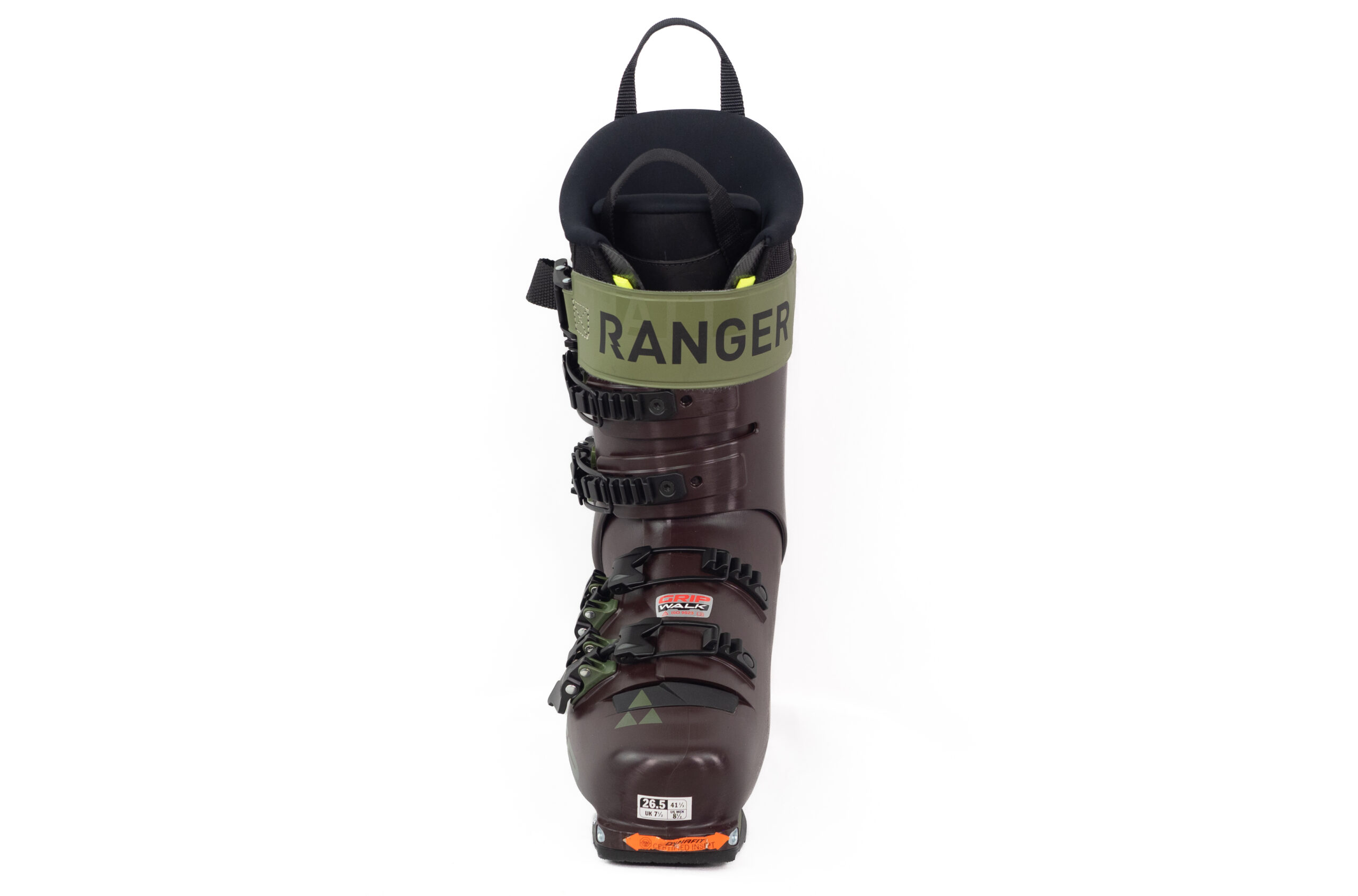

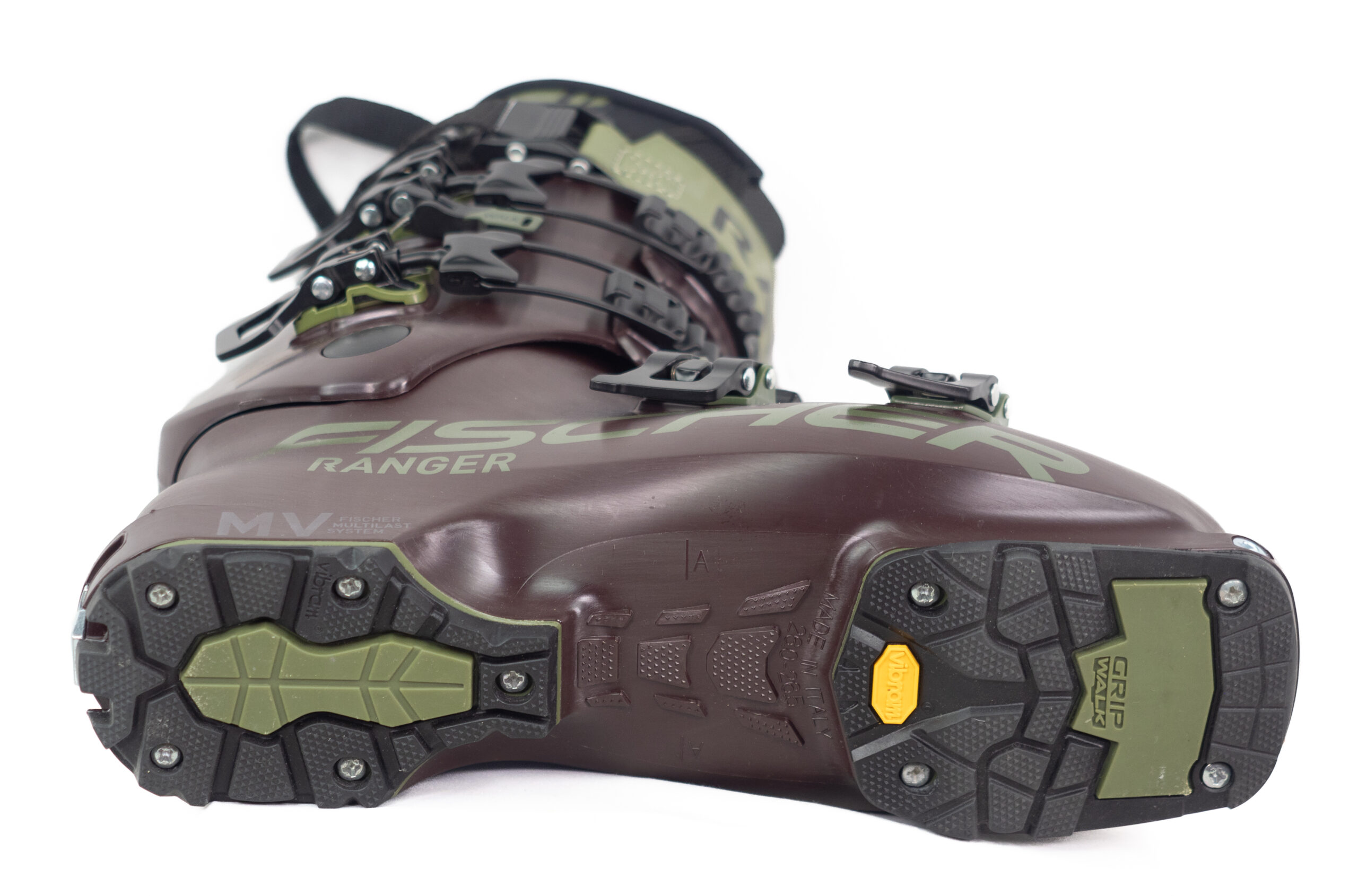
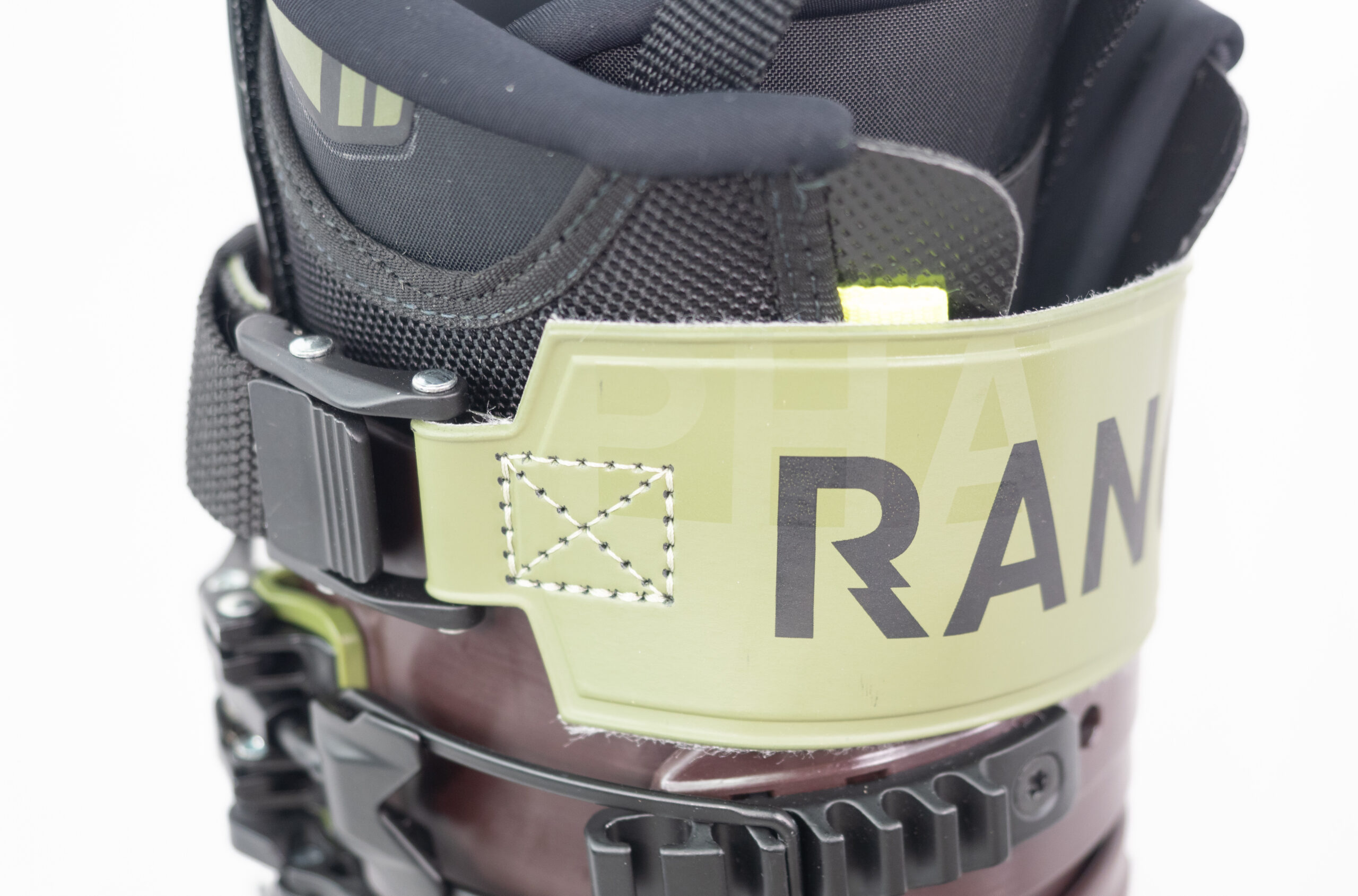
The Ranger Series
[Note on Sizing: Fischer doesn’t explicitly label their boots as unisex or women-specific, but the boots we’ve included in the “women-specific” list below are all available in sizes ranging from 22.5 to 27.5, while the “unisex” models are available from 25.5 to 30.5, with the Ranger Pro 130 being the exception; that top-level model is available down to a size 23.5.]
The 99mm-lasted (size 26.5) Ranger boot series consists of three unisex boots and two women-specific boots. Materials and ranges of motion aren’t stated for all the models, but stated weights between the unisex 130-flex and 120-flex boot mostly remain consistent, while the 110-flex model is about 150 grams lighter.
There is also the Ranger One series, which features a similar overall design but is about ~100 g heavier and is built with different liners and power straps. The Ranger One series features a higher-volume 101 mm last for a size 26.5, allows for Fischer’s Vacuum fitting process, and features “Easy-Entry Flaps” at the instep. With those differences, it seems like the Ranger One boots may be a good alternative for people with wider feet and/or those who like the sound of Fischer’s impressively adaptable Vacuum molding process.
Here’s the full list of 22/23 Ranger boots, with stated last widths (all for a size 26.5) and MSRP.
Unisex Boots:
- Ranger Pro 130 GW DYN: 99mm last, $849.99
- Ranger 120 GW DYN: 99mm last, $749.99
- Ranger 110 GW DYN: 99mm last, $649.99
- Ranger ONE 130 VAC GW DYN: 101mm last, $849.99
- Ranger ONE 120 VAC GW DYN: 101mm last, $749.99
Women-Specific Boots:
- Ranger 115 GW DYN: 99mm last, $749.99
- Ranger 105 GW DYN: 99mm last, $649.99
- Ranger ONE 115 VAC GW DYN: 101mm last, $749.99
- Ranger ONE 95 VAC GW DYN: 101mm last, $549.99
Weight & Comparisons
This year it seems that nearly every major boot brand has a boot series that falls under the category of “50/50,” “alpine / freeride touring,” or whatever else you want to call a boot designed with both lift-accessed and human-powered skiing in mind. As a result, there is a growing cluster of touring-capable boots weighing from ~1650 grams to ~2000 grams for a size 26.5. The old Ranger Free 130 had been on the lighter side of that range, but the new Ranger Pro 130 now sits more toward the middle of that spectrum.
Below is listed a number of our measured weights of other boots with walk mechanisms. We list the weights of each shell + the weights of each liner, then the total weights of the shells + liners.
Salomon S/Lab MTN Summit (26.5): 963 g & 971.5 + 212.5 & 215 = 1187 & 1178 g
Scarpa Maestrale RS (24.5 / 25.0): 1053 & 1057 + 244 & 245 = 1297 & 1302 g
Tecnica Zero G Tour Pro (26.5): 1099 & 1100 + 210 & 211 = 1309 & 1311 g
Dynafit Hoji Pro Tour (26.5): 1169 & 1174 + 214 & 215 = 1383 & 1389 g
Salomon MTN Explore (26.5): 1126 & 1135 + 281 & 281 = 1407 & 1416 g
Scarpa Maestrale XT (26.5 / 27.0): 1258 & 1258 + 247 & 252 = 1505 & 1510 g
Head Kore 1 (26.5): 1132 & 1136 + 392 & 393 = 1524 & 1527 g
Atomic Hawx Ultra XTD 130 (26.5): 1147 & 1150 + 403 & 404 = 1550 & 1554 g
Fischer Ranger Free 130 (26.5): 1204 & 1204 + 348 & 351 = 1552 & 1555 g
Roxa R3 130 TI I. R. (26.5): 1327 & 1335 + 249 & 251 = 1576 & 1586 g
Roxa R3 130 T.I. (27.5): 1319 & 1320 + 263 & 263 = 1582 & 1583 g
Head Kore RS 130 GW (26.5): 1334 & 1340 + 279 & 276 = 1613 & 1616 g
Dynafit Hoji Free (27.5): 1317 & 1332 + 331 & 325 = 1648 & 1657 g
Atomic Hawx Prime XTD 130 (26.5): 1242 & 1249 + 408 & 410 = 1650 & 1659 g
K2 Mindbender 130 (26.5): 1429 & 1416 + 340 & 338.5 = 1769 & 1755 g
Fischer Ranger Pro 130 GW DYN (26.5): 1381 & 1381 + 388.5 g & 392.5 = 1770 & 1774 g
Lange XT3 130 LV (26.5): 1407 & 1410 + 368 & 368 = 1775 & 1778 g
Nordica Strider Pro 130 DYN (27.5): 1445 & 1440 + 363 & 373 = 1808 & 1813 g
Tecnica Cochise 130 (26.5): 1398 & 1405 + 422 & 419 = 1820 & 1824 g
Dalbello Lupo Pro HD w/o Tongues (26.5): 1589 & 1596 + 266 & 267 = 1855 & 1863 g
Full Tilt Ascendant SC w/o Tongues (26.5): 1577 & 1576 + 286 & 288 = 1863 & 1864 g
Dalbello Lupo Pro HD w/ Tongues (26.5): 1747 & 1754 + 266 & 267 = 2013 & 2021 g
Full Tilt Ascendant SC w/ Tongues (26.5): 1740 & 1739 + 286 & 288 = 2026 & 2027 g
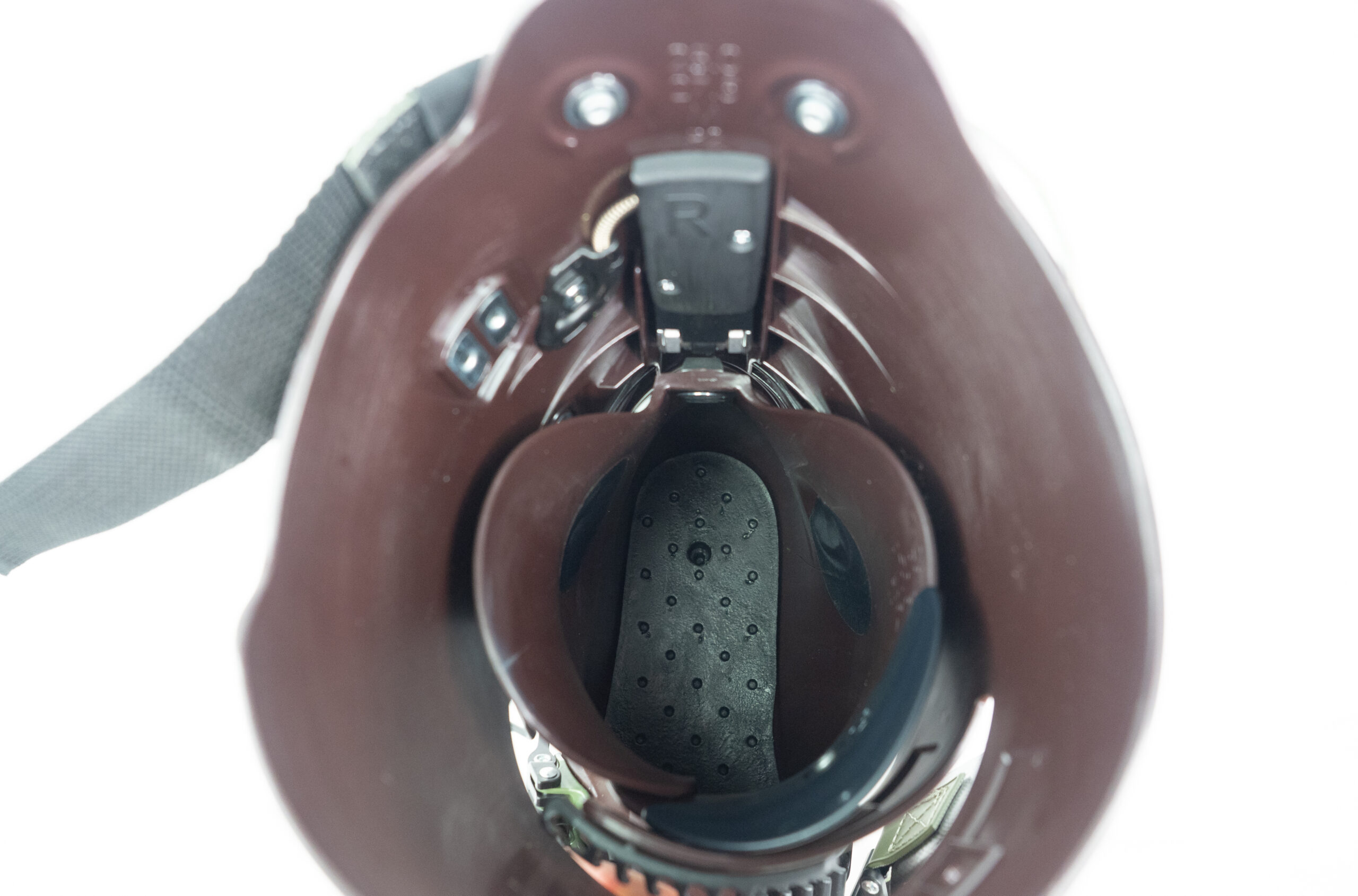
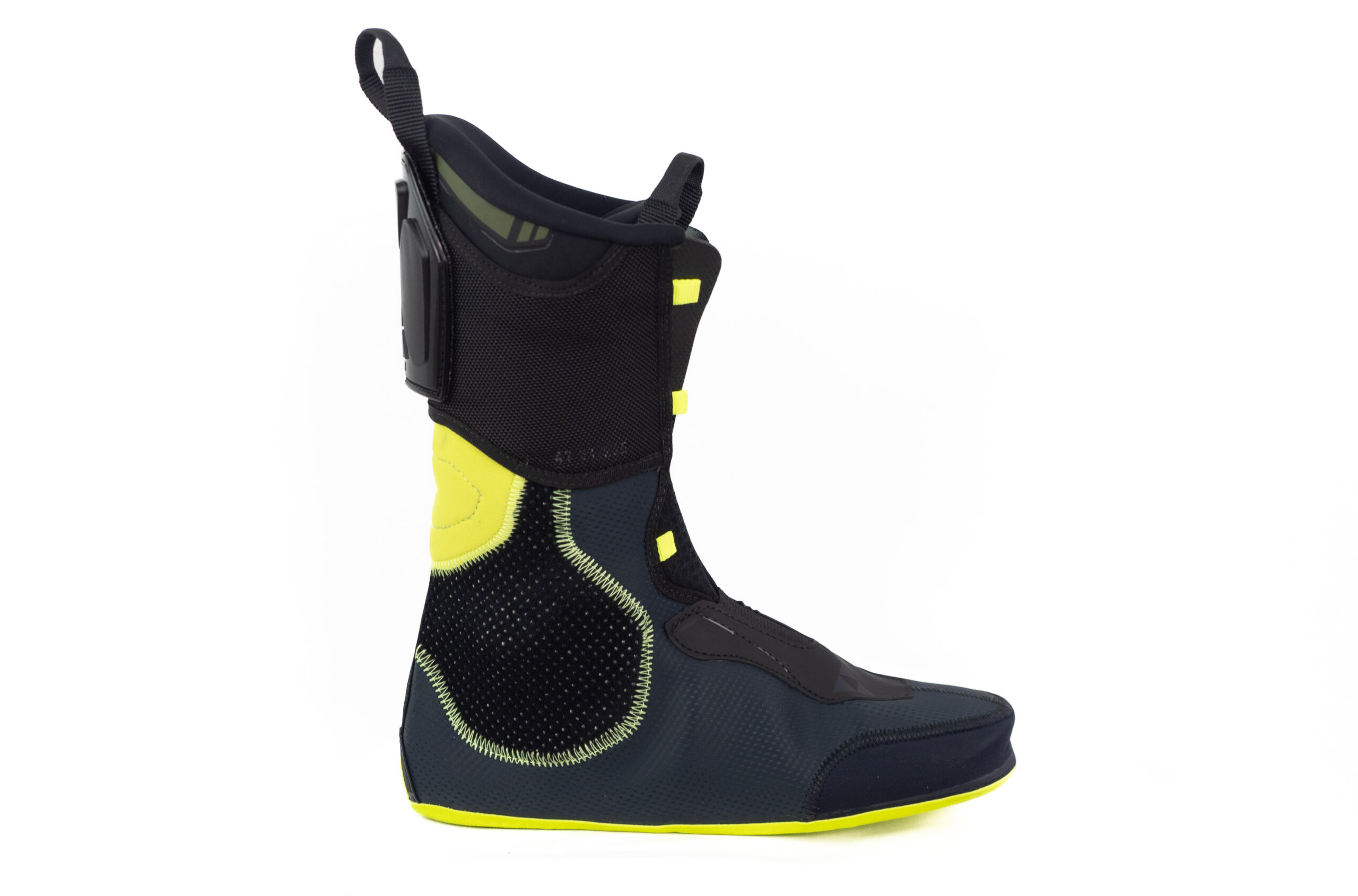
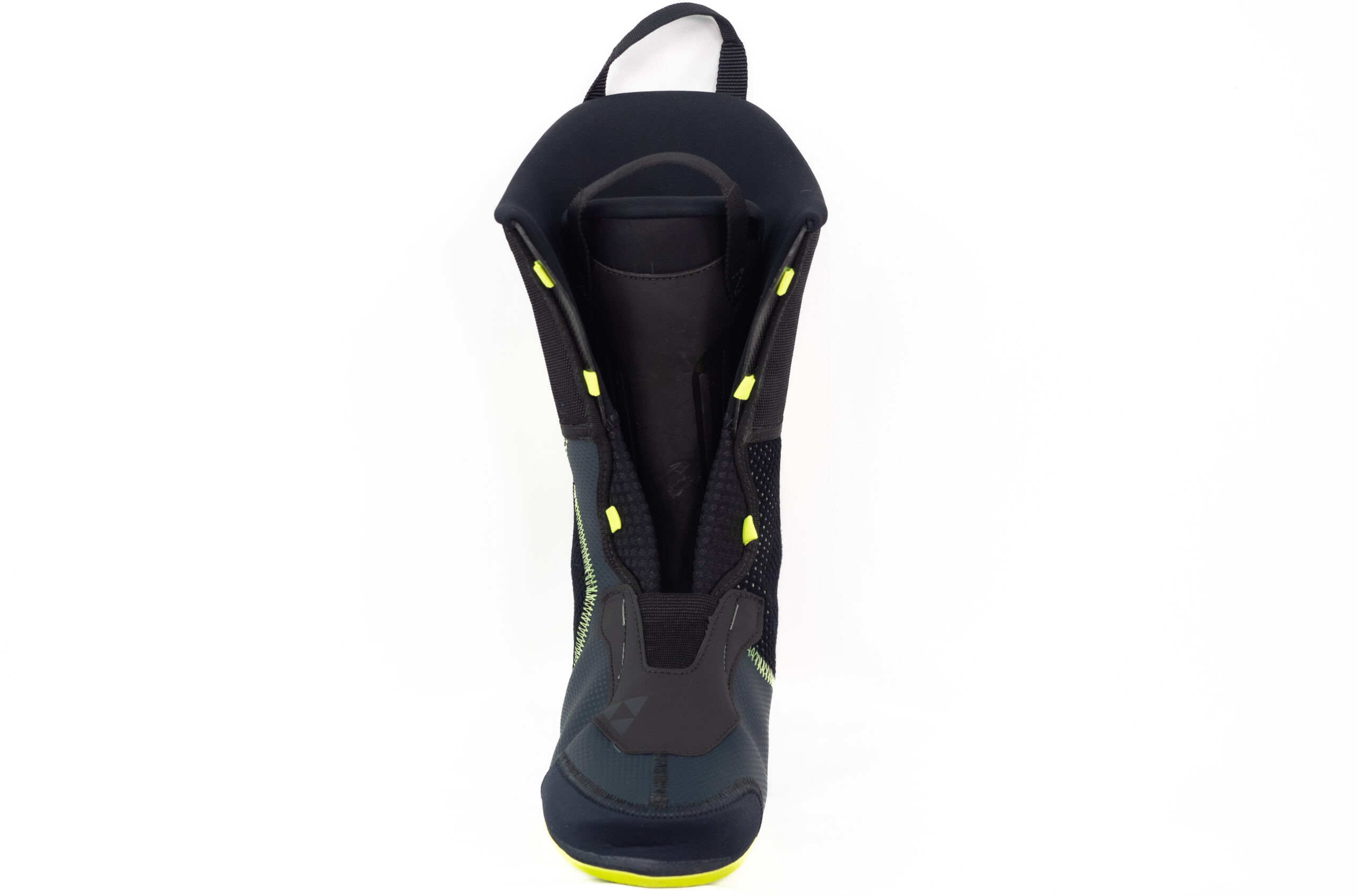
Things We’re Curious About
As with all boots we test, we will be comparing the fit, skiing, and touring performance of the Ranger Pro 130 to a whole bunch of other boots. In particular, we’re eager to find out:
(1) How does the Ranger Pro 130 compare to its previous versions; what impacts do its new plastic and liner have on the uphill and downhill performance of the boot?
(2) Does the reported low-friction cuff articulation and range of motion impress us in the current 22/23 Ranger Pro 130 as much those traits did in the 18/19 Ranger Free?
Stay Tuned
We received the 22/23 Ranger Pro 130 GW DYN this summer, and will begin testing it in both resort and backcountry settings as soon as snow begins to accumulate. Until then, let us know of any questions or thoughts you have in the comments section below.


Good stuff Fischer, glad you are going up to 30.5!
What is the main difference from last years Ranger 130 Walk Dyn? The stated weight is up around 200g.
Hi Daniel,
weight increase is (1) due to the change from PA (Grilamid) to PU plastic in the shell/cuff and (2) the “beefing up” updates to the Liner.
Our view was the additional 200g were well worth the significant improvements in downhill ski performance.
Cheers!
Your statement “With the change to TPU plastic, the 22/23 Ranger Pro does not allow for Fischer’s “Vacuum” shell molding and so will require the more traditional stretching and grinding methods to fine-tune […]” is incorrect. Please check the Fischer website for this boot: “ZoneFit and Vacuum moldable at 120° C.” I had them Thermo-/Vacuumformed to my feet yesterday, worked fine, much better fit afterwards. Cant´t wait to get out on the slopes.
Hi Peter,
We actually asked Fischer this question in our research before publishing this First Look. Our goal was to be able to accurately compare this new Ranger Pro 130 22/23 to past iterations of the boot. Their response was that the 22/23 Ranger Pro 130 is not vacuum-fit moldable (previous versions were), and their stated rationale is that many boot-fitters don’t have Fischer’s proprietary vacuum fit tools, so they made this new boot moldable/workable with traditional boot fitting methods: liner heat molding, punching, grinding, shimming, etc.
Despite what Fischer’s website says…that is the information we gathered from them directly.
I’m glad your boots are feeling good!—though your description leaves me wondering which year boot you got/more specifics on the process…There is a line of thought among some bootfitters that most boot shells—even ones that don’t state they are heat moldable—can be heat molded (heated in a boot oven and then removed and put on customer’s foot warm, buckled lightly, and shock-cooled) to some small extent…
Is there ever going to be an update on this review? :(
For anyone looking for more details, there was a follow-up on the ’23/24:
https://blisterreview.com/flash-reviews/flash-reviews-skiing/23-24-fischer-ranger-pro-130